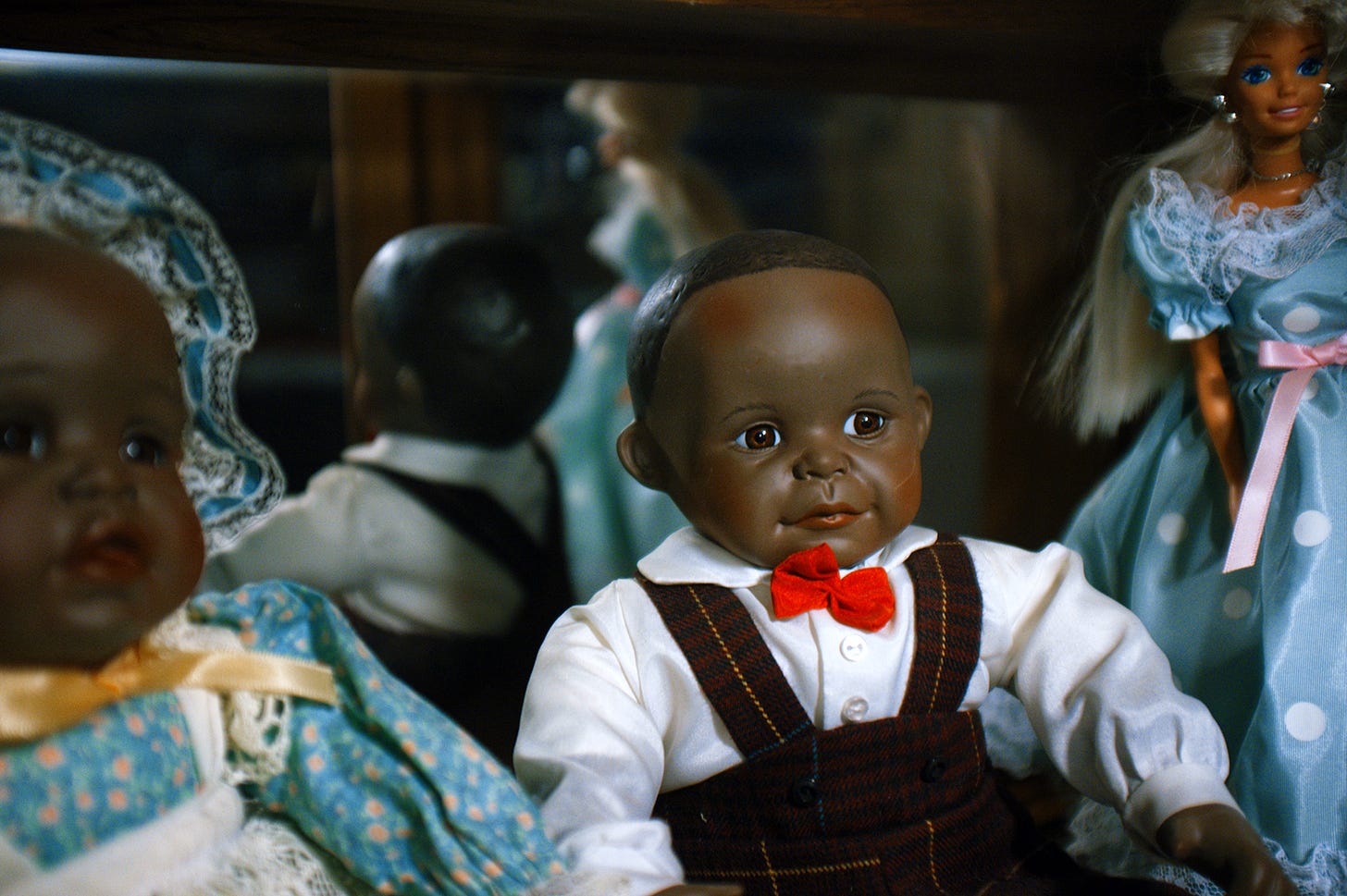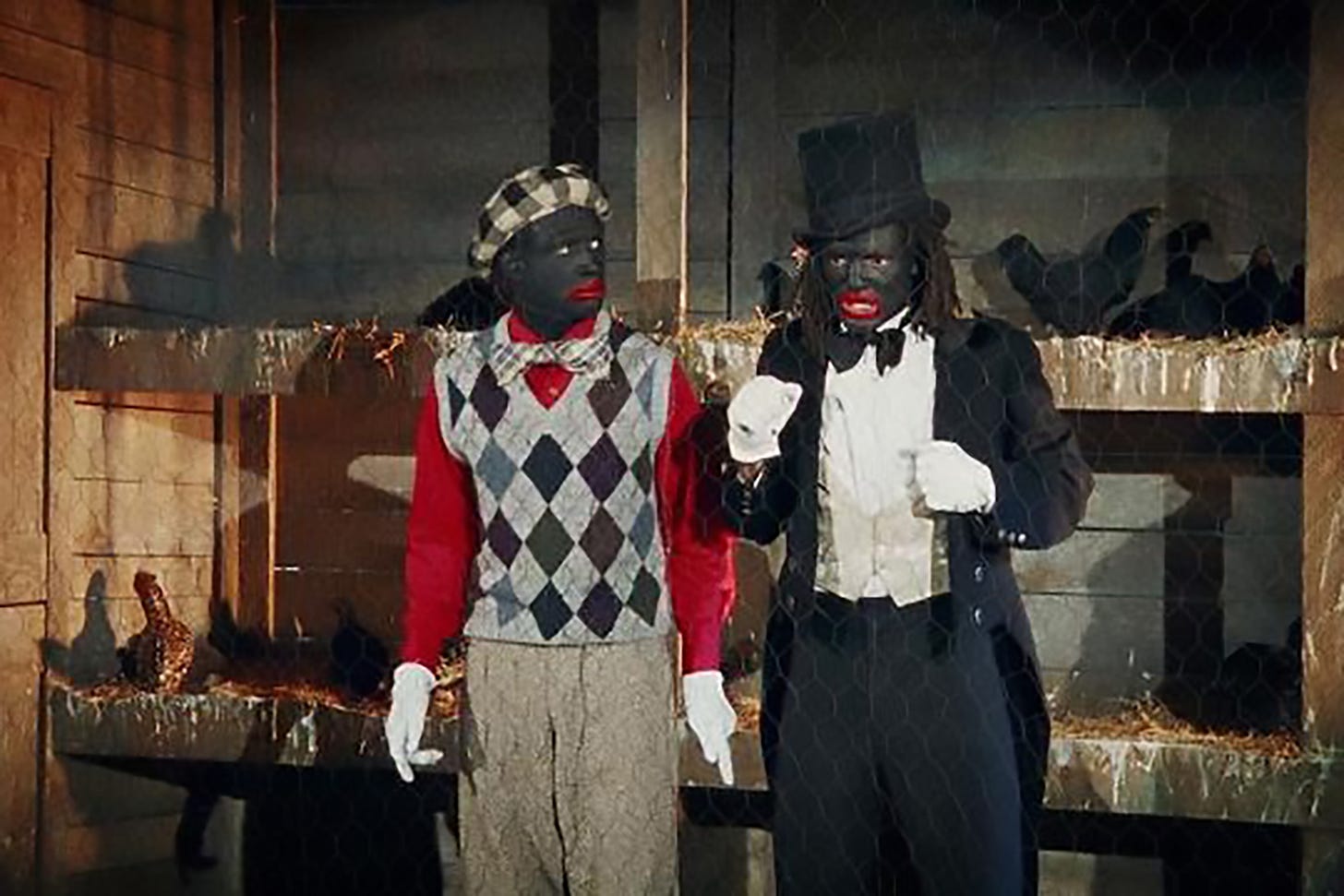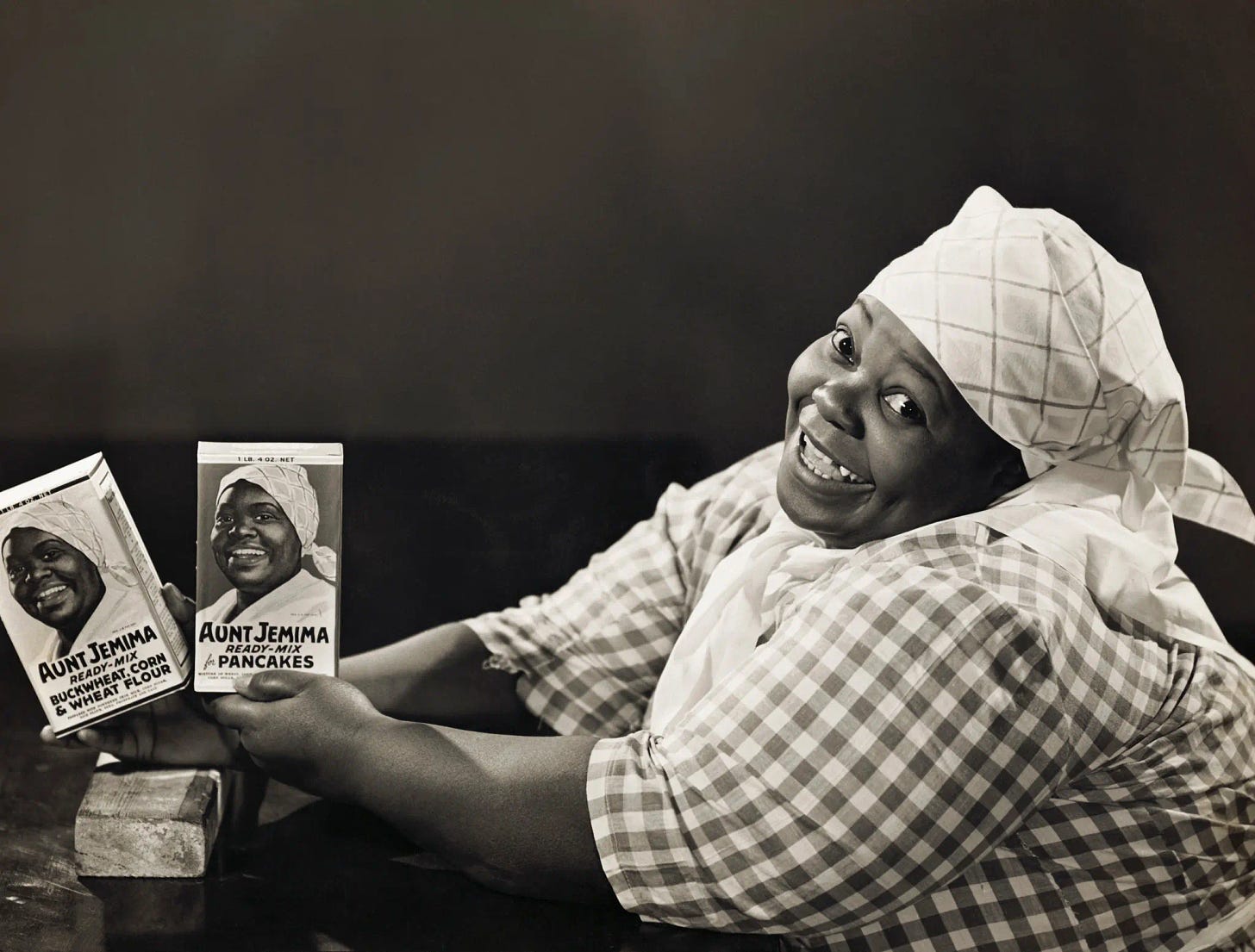When I was seventeen I quit school and moved to L.A. My aunt was a bank manager and she helped me get a job working midnights doing data entry in the basement of a skyscraper downtown. It was a diverse workplace and I hung out with a group that included two young black women and a Mexican low rider, among others. One of the black women, Trudy, was working on a master’s degree at USC during the day, which I now know to be impressive, but it meant nothing to me back then beyond the fact that she was “going to college.”
I wasn’t conscious of it, but they quickly let me know that I was a hick from Indiana with a thick southern-ish accent. I took the kidding in stride but a lot of it went right over my head. One night Trudy, in highly exaggerated language, invited me to come over to her place and she’d serve me fried chicken and watermelon.
Fried chicken and watermelon sounded good to me. When I was a child we went over to my grandmother’s every Sunday after church and she cooked fried chicken in cast iron skillets on a cast iron wood stove. She grew watermelon in the garden and we had that for desert all summer while it was in season. And my mom’s relatives used to throw large family picnics out deep in the country and they always featured fried chicken and watermelon. So when Trudy was making fun of me with her fake invitation, I had no idea that fried chicken and watermelon was a racist trope. It was Sunday lunch to me. She was a bit flustered when she realized I wasn’t getting her humor and accepted her invitation. It was many years before I understood the joke.
I thought of that incident when I read this article about a school in New York that served fried chicken and watermelon on the first day of Black History Month.
Officials at a New York middle school have apologized after serving students fried chicken, watermelon and waffles on the first day of Black History Month
School administrators added that the school’s food vendor, Aramark, provided a different meal than what had been scheduled.
Apparently, the food vendor, Aramark, is a straight up racist company.
This latest meal is not the first time Aramark has come under fire for a meal with racist undertones.
In 2018, Aramark received widespread backlash for serving New York University students a meal that included watermelon-flavored water as part of a meal honoring Black History Month…
…Aramark sparked similar controversy in 2011 after serving fried chicken and waffles to University of California at Irvine students on Martin Luther King Jr Day.
WTF? Anyone see a pattern there?
Anyway, although that example of a ridiculously racist piece of shit company is what spurred me to write about this, this has been percolating for quite awhile. It’s more to do with my own history, part of which I detailed above. Although I recognize that racists use it as an insult and that fried chicken and watermelon is a racist trope that is hurtful to many African-Americans, and probably much of the diaspora as well, I don’t think letting it be a hurtful racist trope is the best way to handle it. Why not own it? Be proud of it? The article goes on to at least partially explain why I feel that way.
Black people’s association with watermelon dates back to the US abolition of slavery. After emancipation, many Black people grew the fruits and sold them, and they became symbols of their freedom. White people who opposed the end of slavery then used watermelons to belittle Black people, according to the National Museum of African American History and Culture.
Meanwhile, because enslaved people perfected techniques to make fried chicken, that food, too, has been used to mock Black people in the US, professor Marcia Chatelain – who teaches history and African American studies at Georgetown University – wrote in the Washington Post in 2019.
Basically, the racists have taken things about black American culture that people can be proud of, or at least are so common as to not merit attention, and things that a large segment of typical white people do as well, and turned them into hateful attack words.
That is a common pattern, not just with racists, but with fascist types of all sorts. Take what the people they hate and fear are proud of and make it shameful. Take what is good and make it bad. That strategy is an important cog in the machine of dehumanization, disenfranchisement and control.
Bamboozled is legitimately great film by Spike Lee that confronts these issues straight on. It was a box office bomb when it was released in 2000, but has since come to be recognized as a masterpiece. The plot is similar to The Producers in that a television show is designed to fail due to its extremely offensive content, but instead becomes an unexpected hit.
Stephen Holden’s review in the New York Times lays out what makes the the show within the show so offensive:
A black Harvard-educated executive for a failing television network hatches a Frankenstein monster of a program called ''Mantan: The New Millennium Minstrel Show.''
…Mantan and Sleep 'n' Eat are supported by a song-and-dance ensemble, the Pickaninnys, who include rollicking reincarnations of Aunt Jemima, Sambo, Rastus and Jungle Bunny. The jolly minstrel band accompanying them is called the Alabama Porch Monkeys.
It takes place in a watermelon patch. What the hell was Spike Lee thinking? I thought he’d gone crazy the first time I saw it. Perhaps he did, but there are other explanations.
Lee saw Bamboozled as a way to mark the 100th anniversary of cinema and 50 years of TV. A time for celebration for many. Not for Lee. He wanted to look at the history from another perspective: “I felt it would be a good time to look at how [these art forms] treated the depiction of black people.” Not good, is the short answer. “It’s the exploration of how [they have] dehumanised human beings.”
Kaleem Aftab, BBC
Like my anecdote above about my first experiences with diversity in L.A., I was very naive about minstrel shows, blackface and associated racist memorabilia. Divorced from racist cultural context, I found many of the images beautiful. Of course the film significantly raised my awareness and understanding of how hurtful that kind of thing is for many, but I thought Lee was going beyond sadness and rage and trying to reclaim the racist imagery by depicting it so beautifully. The way he films the process of making blackface and the actors applying it was shot in a way that seemed almost lovingly. Same with a scene late in the film when the camera pans across shelves of racist memorabilia in De La’s office. I get that Lee’s intention was to convey the horror of the art, but I thought maybe subconsciously he couldn’t stop his camera from loving its inherent beauty, which would add an additional layer to the plot of The Producers. He wanted it to be offensive, it became popular. He wanted it to be ugly, it became beautiful.
I’ve come to doubt that there is any truth to that and think it’s more a symptom of my cluelessness as a white dude from the sticks. I had this conversation with my son and that was his take. He said that I was like the white people in The New Millennium Minstrel Show’s audience that Lee was lampooning, totally missing the point of the show and basically thinking the film gave them permission to let out something of their inner racist. I could see in his face he was struggling with the idea of whether to cancel me or not, but I think he just concluded to let grandpa Simpson be grandpa Simpson.
Well, perhaps I am just an old coot exposing lingering racist tropes circulating deep in my subconscious. But perhaps seeing it more in the context of my opening anecdote about fried chicken and watermelon is where we should be going with much of what has become accepted as racist imagery. My point is that just as, stripped of its racist context, there is nothing whatsoever wrong with anyone liking fried chicken and watermelon, it’s much more importantly true that there is nothing whatsoever ugly or laughable about black skin, large lips, flat noses, or any other ethic commonality in how people look from any society from anywhere on earth.
In this and so many other issues we shout at each other about these days, we have let the most vile people define the narrative. In this case, they have effectively portrayed typical African features as laughably ugly – and way too many people, including a lot of Africans and African-Americans, as well as white progressives and liberals, have bought into it, or one could say, been bamboozled by it.
Perhaps nothing illustrates that better than the image of Aunt Jemima. Of course there is a lot wrong with the history of the aunt Jemima character as a happy slave, but as the above picture of Nancy Green, the actress who portrayed aunt Jemima for so long, and her replacement on the pancake syrup’s label demonstrates – the very act of depicting typical features of an African Woman is now considered racist.
How crazy is that? In an effort to be anti-racist, a typical African woman’s skin is lightened, her hair straightened, her nose and lips thinned - her visual identity erased. Just like accepting the racist notion that there is something inferior about liking fried chicken and watermelon, the most vile racists have defined the concept of beauty in a way that denigrates African features and mainstream culture, including progressives and liberals and perhaps even the Spike Lee who made Bamboozled, have accepted the racist nonsense as reality. Nancy Green was a beautiful woman. Accept that.
Bamboozled ends with a powerful montage. K. Austin Collins sums it up quite well in Vanity Fair.
When I saw Bamboozled for the first time, this closing gambit, which has never not moved me—even when I haven’t always had affection for the movie—struck me as an expression of rage, pure and simple and unfettered. I watch it now—I watch the entire movie now—and see the underside of that rage: the stacked and impenetrable layers of grief. Grief presides throughout this film; as Lee tells us on the commentary track, the flashes of tears you’re seeing on the faces of Glover and Davidson as they cork themselves up are real. This history is real. It is present tense. And with more fervor and risk—if also more folly—than most attempts to wrangle this subject, Bamboozled gets its hands dirty in that living mess. It is a flawed film, and an utterly necessary one.
The film contains plenty of rage, and I saw the grief Collins refers to from the start and really can’t see how anyone could miss it. And Lee also communicates a baffled sense of exasperation that people put up with so much exploitative nonsense. But there is also great beauty, even in the most ugly parts of the film. Whether Lee meant to convey beauty or not through his imagery, I think the beauty somehow manages to shine through the horrible history, hate, depicted in the film.
What I’m saying is not new. The Black is Beautiful movement from the sixties basically made these same arguments. Will what went around come around, or will that short time of relative enlightenment stay repressed, if not forgotten?







